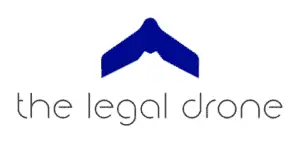The FAA recently announced its Remote ID tech partners in a press release (FAA press release). Specifically, it provides an update on the suppliers that will be the UAS Service Suppliers (USS) for the Remote ID program. I know, I’m sure you’re all sitting on the edge of your seats. But honestly, this press release provides some insight into how the Remote ID proposal ultimately plays out.
If you don’t know what I’m talking about, I’ve written a few other articles on Remote ID, check them out here:
Okay, so the authorized UAS Service Suppliers (USS) are Airbus, AirMap, Amazon, Intel, One Sky, Skyward, T-Mobile and Wing. If you don’t recognize all of those companies, you probably recognize most of them. What’s interesting to me though is that they represent such a broad swath of business interests.
- Airbus (Airbus press release) – While most people probably know Airbus as an airplane manufacturer, but it actually has a pretty interesting shore-to-ship drone delivery program in Singapore. They’ve been able to prove the concept so far of delivering packages up to 4 kilograms (almost 9 pounds) up to 3 km from (almost 2 miles) from shore.
- Airmap – We’ve talked about Airmap before. They are an app that most drone pilots understand as a LAANC app. Check out my full article about the best LAANC apps to get the full scoop on Airmap.
- Amazon – Who doesn’t know Amazon. Especially now, in the middle of the COVID pandemic. Obviously though, Amazon has an interest in drones. We’ve all seen the video showing Amazon’s ability to deliver via drone, but nothing in consumer production yet.
- Intel – Did anyone watch the 2019 Super Bowl (YouTube video)? Then you’ve seen Intel’s drones. Their swarm of drones actually works together to provide a pretty sweet light show. In fact, you can rent 200 drones for only $99,000 (Intel’s website).
- OneSky – This company doesn’t seem to have as much of a consumer facing business, but if you’ve ever used Drone Deploy, your drone information was processed by OneSky’s USS interface (OneSky’s website).
- Skyward – You may or may not know Skyward (it’s a LAANC App), but you definitely know the company that owns Skyward: Verizon. It’s always a good sign for the drone industry when one of the world’s largest companies buys a drone services company.
- T-Mobile – You might be wondering what a cell phone company has to do with Remote ID on drones but T-Mobile is already working with the US DOT and numerous state governments in drone programs that could help lay out how drones work in the future. Specifically, the spectrum of frequencies that have been licensed to T-Mobile support broad coverage areas and will be super helpful for any standard remote ID tech.
- Wing – Guys, it’s just Google. Well, it’s Alphabet, Inc. (which is the parent company of Google). But still, my point is, you know these guys. Just like Amazon, while Wing has completed their first real-world deliveries in 2014, it’s really only been testing and completing take-out food deliveries (YouTube video) in Australia.
All around, I’m pretty pleased with this group of participants in helping the FAA put together a remote ID system. As I said before, if you don’t know what remote ID is, I’ve written a couple of articles specifically describing what remote ID is from a technology standpoint as well as the FAA’s notice of proposed rule making on a future remote ID program.

